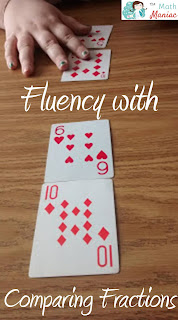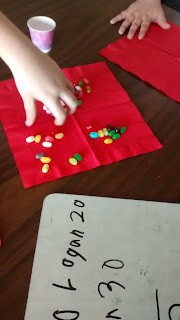We are less than a week away from the launch of our new book study of Minds on Mathematics. I had a few minutes today to dig into the book and wanted to share some of my thoughts about the introduction.
Why Don't We Get Math?
-Cultural: It's Okay Not to Get It
 This is the one I see the most in my school and in my life. I see over and over again an acceptance among adults that math is hard and it is okay not to get it. I know of several well educated adults who almost brag that their fifth grader does math they don't understand. I have never heard a well educated adult bragging that they couldn't read at a fifth grade level. As the author states, "this social acceptance of mathematical illiteracy is a huge barrier to our children's progress and preparation for life beyond our classrooms."
This is the one I see the most in my school and in my life. I see over and over again an acceptance among adults that math is hard and it is okay not to get it. I know of several well educated adults who almost brag that their fifth grader does math they don't understand. I have never heard a well educated adult bragging that they couldn't read at a fifth grade level. As the author states, "this social acceptance of mathematical illiteracy is a huge barrier to our children's progress and preparation for life beyond our classrooms."
When I was in elementary school math was all about memorizing. The parents of my students are very much in the same place. For some of us, memorizing worked. For others it didn't even come close. No matter where parents fall on this spectrum, most parents believe that math is memorizing. They want to help when their student is struggling but their idea of helping is to remind kids of the steps to a procedure.
- Individual: Math Ability is Innate
This is true even in my own family. I remember being good at math from an early age and my Mom always being surprised and wondering where my math ability came from. More than any other subject in school, people seem to have this idea that math skills are inherited or passed down genetically. This is where the excellent research on growth versus fixed mindset can really help understand how ability is the product of effort.
Minds-On Math Workshops
Minds on math workshop aims to challenge these beliefs and provide students with a "learning experience in which students are challenged to grapple with their thinking and understanding about math in light of new information and challenges, to make meaning for themselves." Minds on math workshop is about leaving behind decontextualized arithmetic and giving the kids a change to construct meaning for themselves.
After reading the introduction, I can see this book aligns well with what I am already doing and the things I have experienced as a math teacher over the past 10 years. I am excited to read more and further refine my teaching practice! Want to join me? Check out the posting schedule below! Need more information, get it here!











